
British Rail, Hand Signal Oil Lamp Railway Guard Lantern, SC, Railroad
Railroad Hand Signals Lantern, Flag, or Empty Handed GO! Raise straight up and down. GO BACK! Swing up and down in a circle at half an arm's length across the track, when the train is moving. SLOW DOWN! Hold at arm's length when the train is moving. TRAIN HAS PARTED! This tells the trainmen that cars have come loose. Swing up and
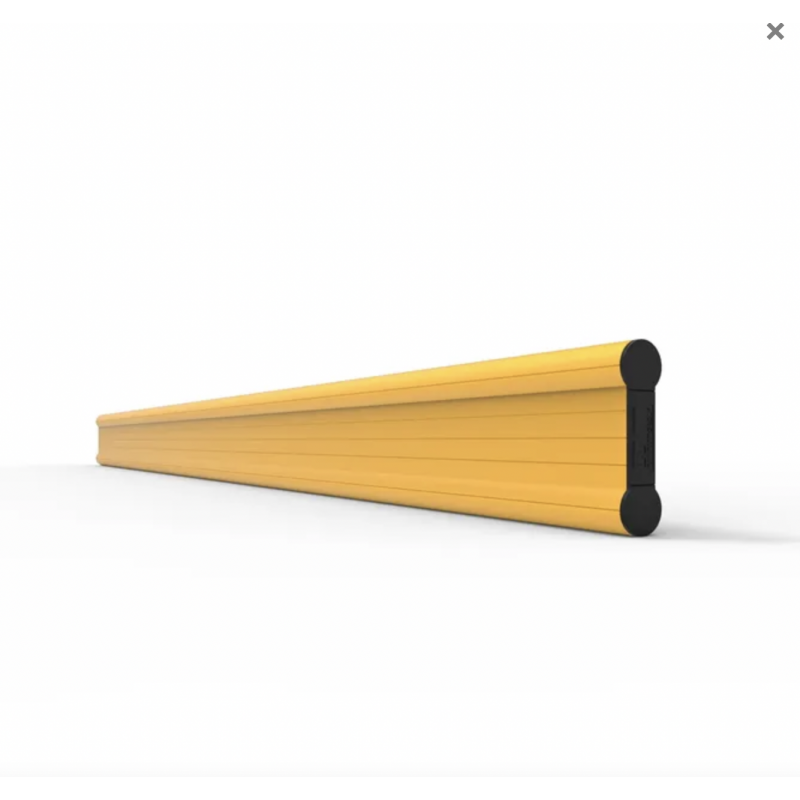
PR Rail Hand Rail System
Railroad/Train Hand Signals - RSUS Hand Signals Standard PRR Hand Signals and Rules These pages are from a PRR rulebook dated April 26, 1925. These scans are from pages 15 through 17. For the whistle signals from this rulebook, click HERE. Thanks to Michael Watnoski for loaning me his PRR rulebook. Disclaimers: I love trains, and I love signals.

Hand Rail HR04 Profile
Standards for North American railroad signaling in the United States are issued by the Association of American Railroads (AAR), which is a trade association of the railroads of Canada, the US, and Mexico. Their system is loosely based on practices developed in the United Kingdom during the early years of railway development. However, North American practice diverged from that of the United.
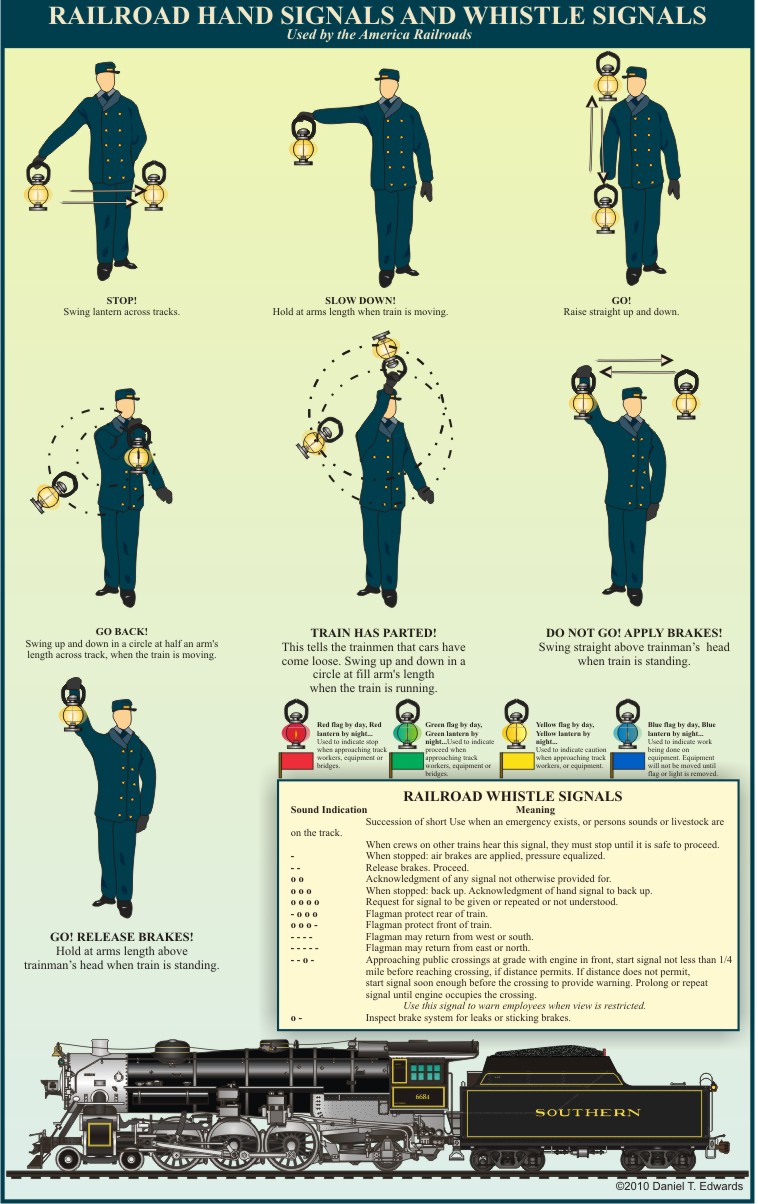
Railroad Hand Signals and Whistle Signals Poster
Hand signals are an ideal communication tool when working around noisy rail yard machinery. To help everyone communicate in the same "language," we have adopted 8 d o n n hand signals for your safety. These signals should be learned and used by all employees and visitors such as truck drivers, salespeople and Extension agents.

Image result for train conductor hand signals Railroad lanterns
Railroad hand signals using a lantern. This veteran Norfolk Southern employee demonstrates how to signal the train to stop, proceed, reverse etc. Then we v.
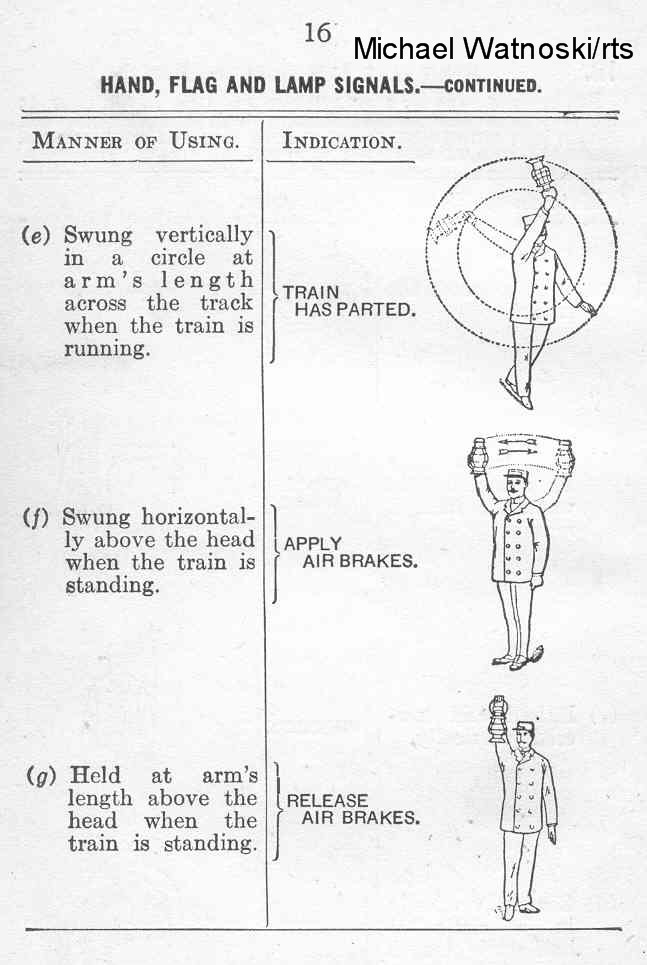
Railroad/Train Hand Signals RSUS
Signal types North American signals are commonly of three types. Absolute - Absolute signals are usually connected to an interlocking controlled by a block operator or train dispatcher. Their most restrictive aspect is "Stop" and trains cannot pass them at Stop unless they obtain special authority.

FileRail track.jpg Wikipedia
Section 2 - Rail Operating Rules Section 5 - Communications Section 8 - On-Track (OTE) Operation Section 3 - Switches Section 6 - Protection of Workers on. 4.2 Hand Signals. 40 4.3 Giving and Receiving Hand Signals. 41 4.4 Obscured View of.

lost art of railroad hand signals.wmv YouTube
Railway signalling ( BE ), also called railroad signaling ( AE ), is a system used to control the movement of railway traffic. Trains move on fixed rails, making them uniquely susceptible to collision.
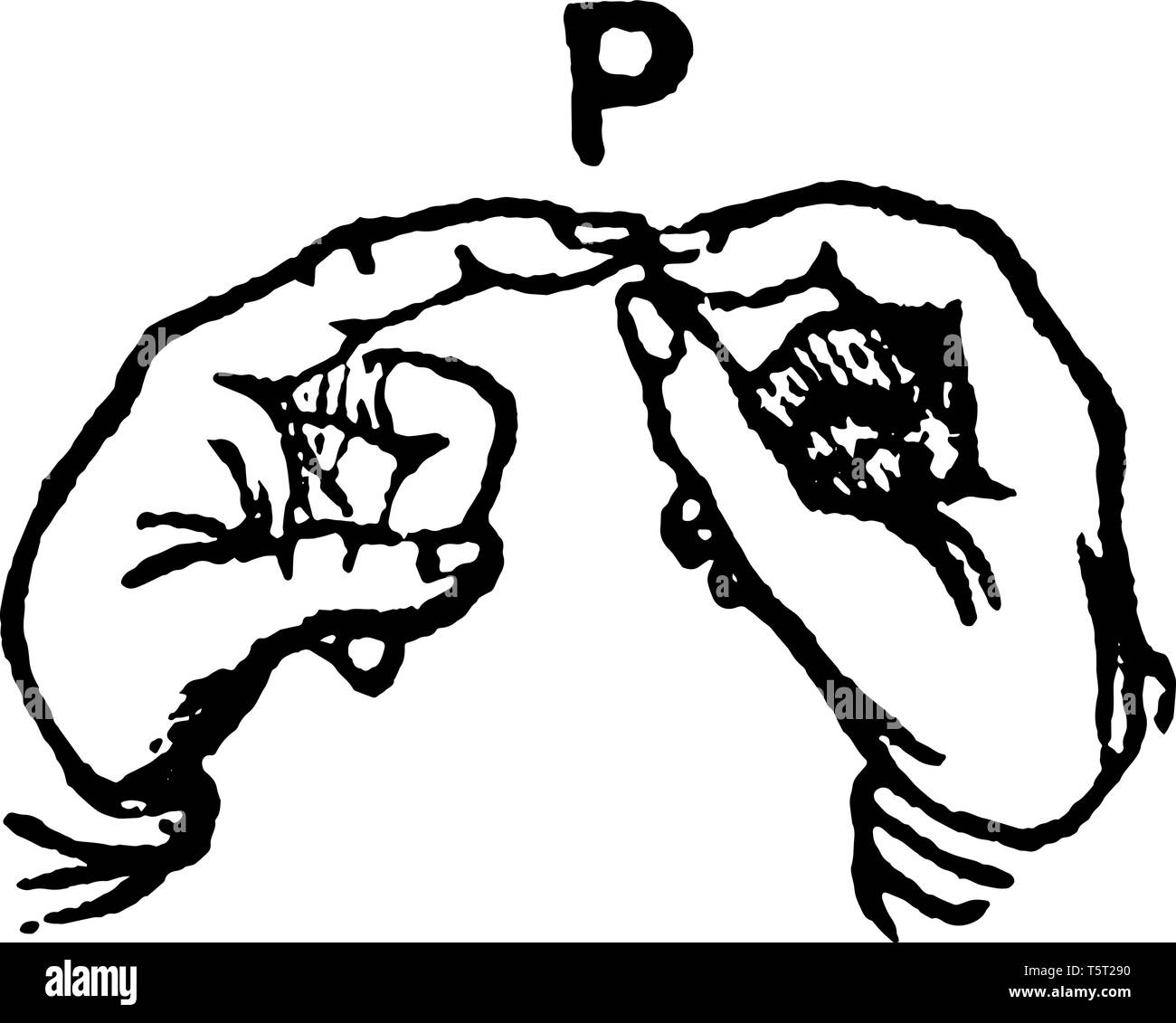
Hand signals Black and White Stock Photos & Images Alamy
A railway signal is a visual display device that conveys instructions or provides warning of instructions regarding the driver's authority to proceed.. The left hand signal then controls the left-hand track, and the right signal the right-hand track. A gantry or signal bridge may also be used. This consists of a platform extending over the.
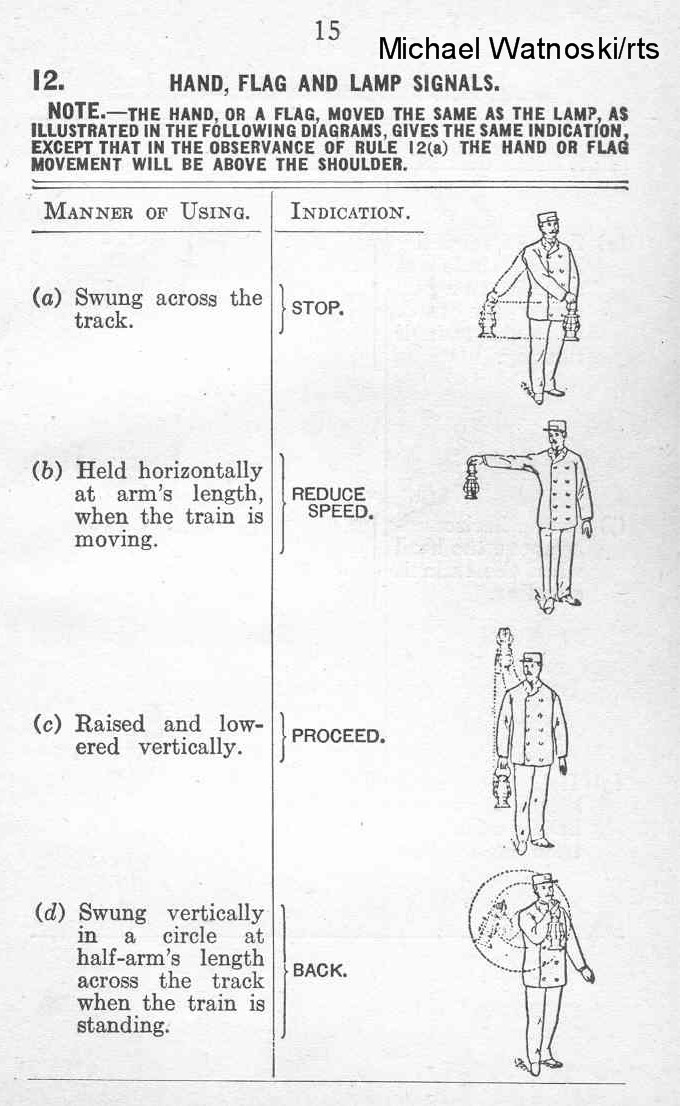
Railroad/Train Hand Signals RSUS
Semaphore signals came in a wide variety of forms, and to my knowledge, more than any other type of signal: 1) Upper or lower quadrant, *. 2) Fixed position, two position or three position, 3) Blades stopping at either the 0, 45, and 90 degree positions, or 0, 30 ,and 60 degrees, *.

Essential guide to road cycling hand signals and calls Road Cycling
Purpose To prescribe the rules for giving and responding to handsignals used in the Australian Rail Track Corporation (ARTC) NSW Network. Principle Giving handsignals Handsignals must be given: in a clear and timely manner, and so that they will be received and acted upon only by those who are being signalled. Handsignallers must:

Hand Signals for Skiers
traffic "bar" signals and other "informational" signals. This standard addresses practice for operating rules and procedures which relate to railway signals and signs associated with an operating rail transit system. As used in this standard, "signal" includes but is not limited to . any device along the wayside thatconveys operational

a chart showing hazardous materials warning placards. Hazardous
There are two types of signals, permissive and absolute. You can tell if a signal is permissive or absolute by looking at it. The rules vary by railroad, but permissive signals usually have a number plate on the base of the mast on which they're mounted, or the letter "I". Absolute signals do not have the number plate or will have the letter "A".

Hand Rail HR02 Profile
Methods used when I was at the SOO/CP Rail were pretty much the same too. Radio and lantern signals are given in relation to which direction the loco is pointing, and daytime hand signals are come toward me, go away from me.. When using hand signals, you are "talking" to the engineer, telling him to "come to me" or "go away from me.

Hand Signals for Skiers
Railroad Hand Signals Chart EHSS-Phos Program - Railroads, Appendix E EHSS-Phos Program - Railroads Page 1 of 2 Appendix E - Railroad Hand Signals Chart Rev #: 07 Effective Date: 03/01/2020 Railroad Hand Signals MANNER OF USING INDICATION Swung across the track STOP Held horizontally at arm's length when train is moving REDUCE SPEED

When Visibility is Obstructed Standard Spotter Signals
Railroad Hand, Flag and Lamp Signals. The hand or flag, moved the same as the lamp, as illustrated in the following diagrams, gives the same indication, except in the observance of Rule 12a the hand or flag movement may be above the shoulder.. Signals must be given from a point where they may be plainly seen and in such a way that they.
